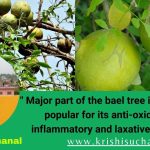Seed priming improves the emergence and yield of crop

It is a simple and low-cost process in which seeds are soaked in osmotic solution(Nawaz et al., 2013) that allowed them to imbibe in water and go through the first stage of germination but prevents the actual emergence of the radicle. Then the seeds are stored in a dried place to remove the moisture and stored and planted on the field. It is a pre-sowing treatment of seeds. several osmotic have been used for seed priming. In organic salts such as KNO3, K3PO4, and chemically inert compounds, polythene glycol6000.
Advantage of seed priming
- Increase tolerance to drought condition.
- Increase the yield and avoid the time-consuming need for re-sowing which is too costly.
- Increase the germination percentage.
- Maintain the uniform crop stand establishment.
- Help to Break down the dormancy due to hard seed coat.
- Faster seeds of emergence.
- Improves uniformity to optimize harvesting efficiency.
Seed priming has various techniques for improving the performance of the growth, emergence, and yield of the crop. There are some techniques i. e. hydro-priming, halopriming, osmopriming, and hormonal priming
Hydro-priming
A low purpose approach in which water is used to soak a seed .sometime rapid hydration results in leakage of nutrients and loss in yield rapidly, to overcome this problem various methods have been introduced i.e seed humidification and aerated hydrations. In seed humidification, seeds are treated with high humidity conditions that result in an increased germinations percentage. Humidification resulted in improved germinations percentage is partially aged mustard seeds. Thus, hydro-priming may have significant beneficial effects on enzyme activity required for rapid seed germination.
Halo-priming
It is a process in which seeds are soaked in inorganic salt such as NaCl, KNO3, CACL2, CASO4, etc. It has been reported that halo priming increases geminations and crop yield of crops. Rice seed treated with salt solutions germinates more rapidly than unprimed seeds. Relatively few and small chemical changes are observed in a dry seed; however, many changes occur in the seed immediately after rehydration. priming seed with inorganic salts would increase the activity of most of the enzymes involved in seed germinations and thus contribute to the mobilization of organic substances to different parts of the embryo
Osmo-priming
It is a process in which see are soaked in a sugar solution, glycerol, sorbitol, polyethylene glycol, and for a certain period followed by air drying before sowing. osmopriming induces rapid seed germination by reducing mechanical restraint of old endosperm. In Osmo primed seed numerous biochemical changes have been introduced of different plant species. In tomatoes, for instance, a space is developed in the primed seed that facilitates water uptake, thereby accelerating the speed of germinations.
Hormonal-priming
Hormonal priming is the pre-seed treatment with different hormones i.e salicylic acid, ascorbate, kinetin, etc. which promotes the growth and development of the seedlings. GA3 treatment on two wheat cultivars increases the vegetative growth but caused a slight reduction in their yield. GA3 also enhanced the deposition of Na+ and CL- in both root and shoot(Faisalabad et al., 2006)
+und that GA3 treatment enhanced the vegetative growth of two wheat cultivars but caused a slight reduction in their grain yield. GA3 treatment enhanced the deposition of Na+ and Cl- in both root and shoots of wheat plants under prevailing field conditions
Conclusion: Seed priming is very important in the aspect of agriculture as it is necessary to increase the germination rate and seedling growth of a plant. To increase the yield seed priming plays a vital role to regulates the seed’s temperature and moisture content, bringing the seed near to the point of germination.
Reference
Faisalabad, A., Faisalabad, A., Farooq, M., & Wien, T. U. (2006). Alleviation of Salinity Stress in Spring Wheat by Hormonal Priming with ABA, Salicylic Acid and Ascorbic Acid Alleviation of Salinity Stress in Spring Wheat by Hormonal Priming with ABA, Salicylic Acid and Ascorbic Acid. Int.J.Agric. Biol, 8(January), 23–38.
Nawaz, J., Hussain, M., Jabbar, A., Nadeem, G. A., Sajid, M., Subtain, M., & Shabbir, I. (2013). Seed Priming A Technique. International Journal of Agriculture and Crop Sciences, 6(20), 1373–1381.
Writer: Apsara Moktan (Student, Bsc Ag 4th sem, Paklihawa Campus)

 एउटा यस्तो विषालु भ्यागुता, जसको मुल्य नै पर्छ ३ लाख, जान्नुहाेस्
एउटा यस्तो विषालु भ्यागुता, जसको मुल्य नै पर्छ ३ लाख, जान्नुहाेस्  भोलि र पर्सि बालबालिकालाई भिटामिन ए खुवाइदै
भोलि र पर्सि बालबालिकालाई भिटामिन ए खुवाइदै  खगराज अधिकारी गण्डकीको मुख्यमन्त्री नियुक्त
खगराज अधिकारी गण्डकीको मुख्यमन्त्री नियुक्त  सुनसरीमा दुवै पक्षबीच सहमति, कर्फ्यु खुकुलो हुदै
सुनसरीमा दुवै पक्षबीच सहमति, कर्फ्यु खुकुलो हुदै  स्टेफेनको शतकमा आयरल्याण्ड वोल्भ्सले नेपाल ए लाई दियो २८५ रनको लक्ष्य
स्टेफेनको शतकमा आयरल्याण्ड वोल्भ्सले नेपाल ए लाई दियो २८५ रनको लक्ष्य 


